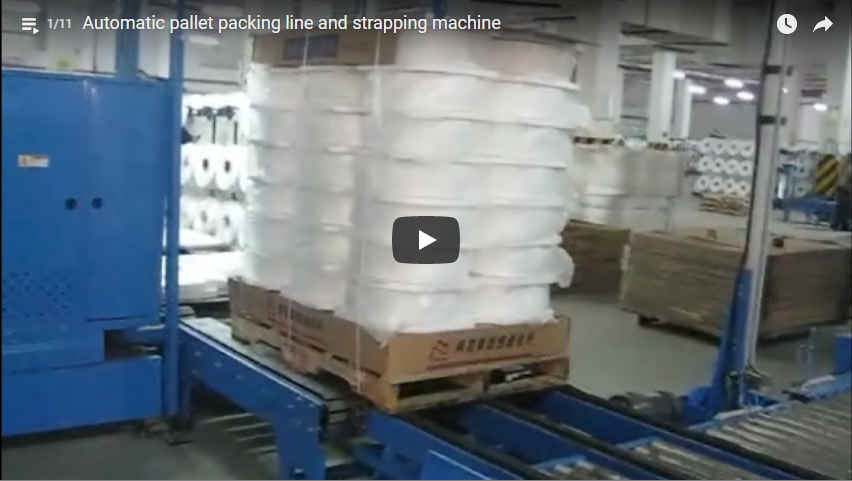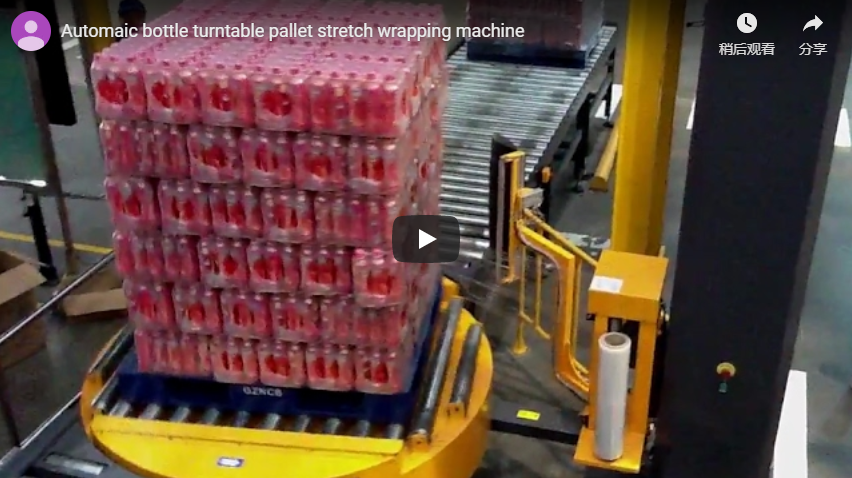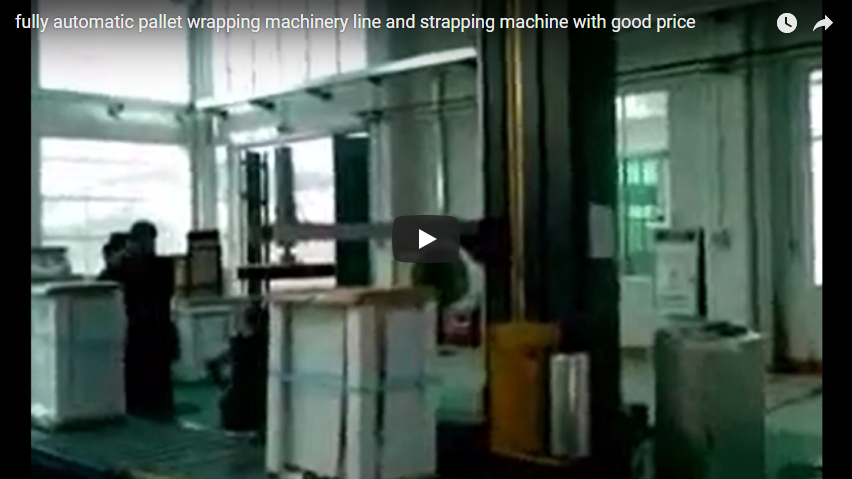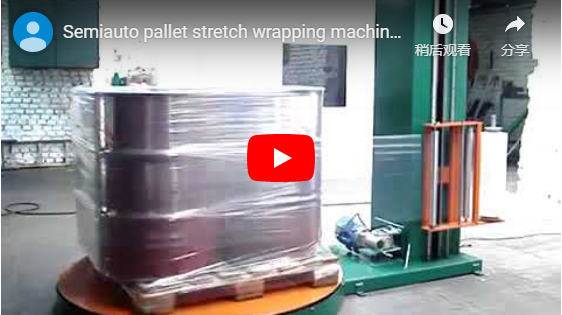Optimizing Load Containment: A Guide to the A200 Semi-Automatic Pallet Wrapper
Effective pallet wrapping is crucial in manufacturing and logistics for ensuring load stability, protecting goods during transit, and improving overall handling efficiency. Securely wrapped pallets minimize product damage, reduce workplace hazards, and contribute to a streamlined supply chain. The A200 semi-automatic stretch wrapper is designed to automate this critical process, offering consistency and reliability for various industrial applications.
1. Understanding the A200 Stretch Wrapper Mechanism
The A200 operates on established principles of stretch wrapping technology, balancing automation with operator oversight. Key components include:
1.1. Motor-Driven Turntable
The core of the machine is a robust turntable where the palletized load is placed. Once activated, the turntable rotates the load at a controlled speed, allowing the stretch film to be applied evenly around the pallet. The speed is often adjustable to accommodate different load weights and stability characteristics.
1.2. Vertical Film Dispenser Mast
A vertical mast houses the film carriage assembly. This carriage holds the roll of stretch film and moves up and down the mast during the wrapping cycle. This ensures complete coverage from the base of the pallet to the top, with adjustable limits to match varying load heights.
1.3. Film Carriage and Tension Control
The film carriage typically includes rollers and a tensioning system. This system controls how much the film is stretched as it's applied, which is critical for load containment. Many semi-automatic wrappers utilize a mechanical or electromagnetic brake system for consistent film tension. Some advanced models might feature powered pre-stretch systems, significantly increasing film yield and improving holding force.
1.4. Control Panel (PLC)
A user-friendly control panel, often featuring a digital display and programmable logic controller (PLC), allows the operator to configure wrapping parameters. Common settings include:
- Number of top and bottom wraps
- Turntable rotation speed
- Film carriage ascent/descent speed
- Film tension level
- Specific wrapping programs for recurring load types
This programmability ensures consistent results across different shifts and operators.
Important Note: The technical specifications listed below represent typical parameters for a machine of this class. The exact specifications for the model shown in the video or for a specific unit may vary. Always confirm details with the manufacturer or supplier for precise information.

2. Key Technical Specifications (Typical A200 Class)
2.1. Performance & Capacity
- Type: Semi-Automatic Stretch Wrapper
- Typical Year of Manufacture Range: 2021-Present
- Condition: Typically New or Refurbished
- Maximum Pallet Dimensions: Length: ~1300mm; Width: ~1300mm; Height: ~2400mm (Varies by model)
- Wrapping Speed: Variable, often up to 20-35 RPM (turntable speed), influencing total cycle time based on load height and wrap pattern.
- Maximum Load Weight: Typically ranges from 1500kg to 2000kg.
2.2. Film Handling
- Film Type Compatibility: Primarily Linear Low-Density Polyethylene (LLDPE) stretch film; compatible with cast or blown films, potentially pre-stretched films depending on the tension system.
- Film Roll Specifications: Maximum outer diameter: ~250mm - 300mm; Core diameter: Standard 76mm (3 inches).
- Film Tension System: Often Electromagnetic Brake or Mechanical Brake; optional powered pre-stretch (e.g., 150%-300%).
2.3. Physical & Electrical
- Power Requirements: Typically 220/230V, 50/60Hz, single phase (confirm specific requirements).
- Machine Dimensions (Approx.): Length: ~2600mm; Width: ~1700mm; Height: ~2700mm (Mast height can vary).
- Machine Weight (Approx.): ~550kg - 700kg.
- Operating Environment: Temperature 0-40°C, Humidity < 85% non-condensing.
2.4. Control & Warranty
- Control System: PLC with digital interface for parameter setting and diagnostics.
- Typical Warranty: 12-24 months, depending on manufacturer and region.
- Typical Origin: Manufacturing origins can vary (e.g., Europe, Asia).
3. Operational Best Practices for Consistent Wrapping
Achieving optimal load containment involves more than just owning the machine; proper operation is key.
3.1. Setting the Right Wrap Pattern
- Bottom Wraps: Apply 3-5 wraps at the base of the pallet, "locking" the load to the pallet structure.
- Top Wraps: Apply 2-3 wraps at the top to secure the upper layers.
- Overlap: Ensure sufficient overlap (typically 30-50%) between film layers as the carriage moves up and down. Adjust carriage speed relative to turntable speed to control this.
3.2. Managing Film Tension
- Adjust tension based on the load characteristics. Heavier, stable loads can generally handle higher tension. Lighter or crushable items require lower tension.
- Consistent tension is crucial. Too loose, and the load shifts; too tight, and the film might break or damage the product. Consult guides on stretch wrapping best practices for detailed insights.
3.3. Loading and Unloading Safely
- Ensure the pallet is centered on the turntable.
- Follow safe operating procedures for approaching the machine, especially during the wrapping cycle. Keep clear of moving parts (turntable, mast).
4. Common Applications in Industrial Settings
The A200's versatility makes it suitable for various sectors:
4.1. Manufacturing and Fabrication
Securing finished goods, components, or raw materials on pallets before shipping or moving to storage. Particularly useful for metal fabricators handling parts, assembled units, or sheet metal stacks. Consistent wrapping prevents scratches, shifting, and potential damage.
4.2. Warehousing and Distribution Centers
Preparing diverse pallet loads for storage or outbound shipment. The A200's speed and consistency improve throughput compared to manual wrapping, especially valuable in high-volume facilities managing pallet sizes up to 1300mm x 1300mm.
4.3. Retail and E-commerce Fulfillment
Protecting palletized consumer goods, electronics, or bulk items during transit to retail stores or distribution hubs. For e-commerce, efficiently wrapping bulk shipments to fulfillment centers ensures inventory arrives safely and ready for breakdown. The machine’s speed supports the fast pace required.

5. Basic Maintenance for Longevity
Regular maintenance ensures reliable operation and extends the machine's life:
- Cleaning: Keep sensors, rollers, and the turntable area free of dust and debris.
- Inspection: Regularly check film rollers, belts, chains, and electrical connections for wear or damage.
- Lubrication: Follow manufacturer recommendations for lubricating moving parts like turntable bearings and mast chains.
- Safety Checks: Verify safety guards and emergency stops are functioning correctly.
Always refer to the manufacturer's specific maintenance manual for detailed procedures and schedules.
For further details on stretch wrapping solutions tailored to specific needs, explore resources like this overview of Stretch wrapping machines.
For inquiries about the A200 or similar equipment:
info@fhopepack.com





